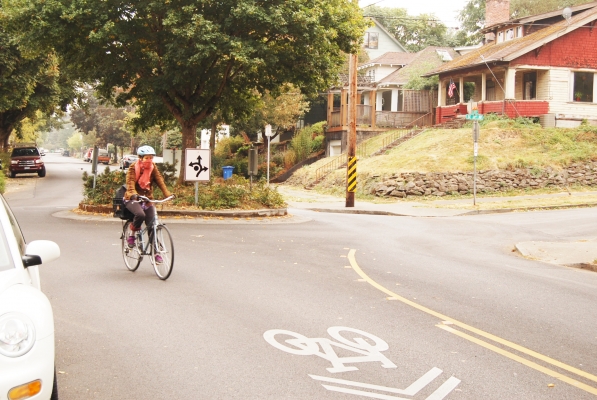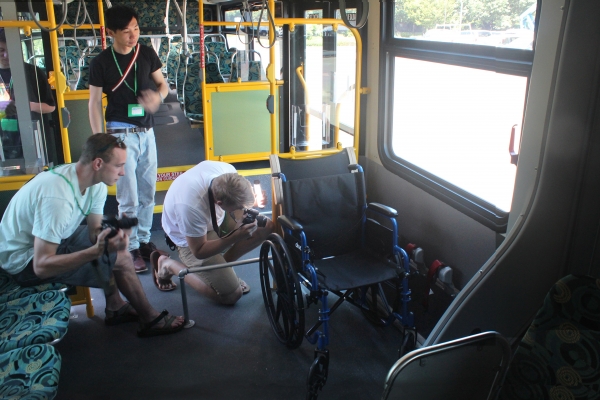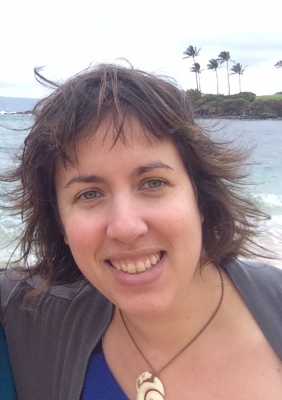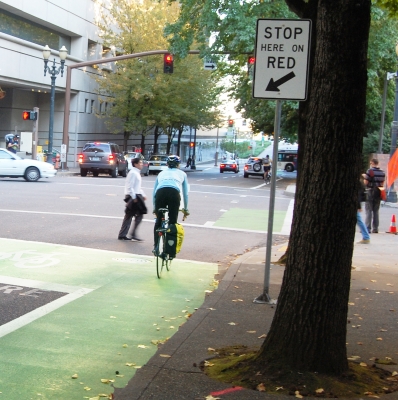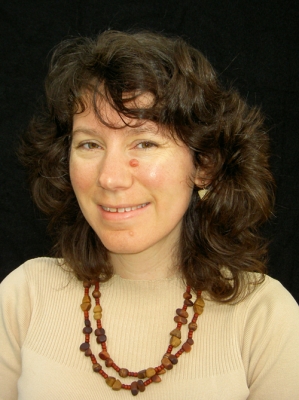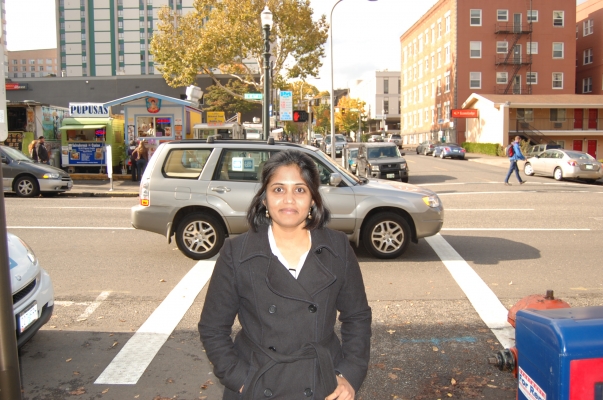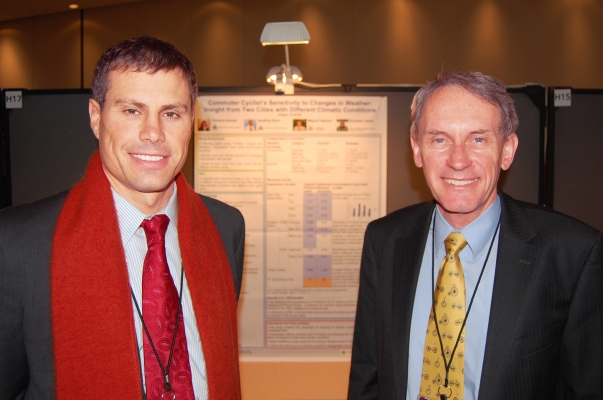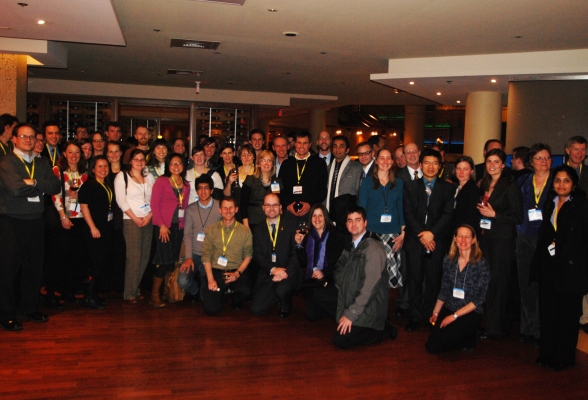Proponents of advanced bikeways will point out a growing body of research on these facilities’ safety and benefits for cycling. They can now add another benefit: higher home values.
Research led by Jenny Liu of Portland State University looked at property around advanced bikeways in Portland, defined as bicycle boulevards, protected bike lanes and buffered bike lanes. She found positive effects on property values close to one of these bikeways and an even stronger effect where the network was denser.
Liu presents her research Wednesday at the annual meeting of the Transportation Research Board in Washington, D.C. Learn more or download the research paper.
For single family home sales, being a quarter mile closer to an advanced bikeway translated to a $686 premium, while increasing the density by a quarter mile represented a $4,039 premium. For multi-family homes, the effect of being close to a bikeway wasn’t statistically significant on sale price, but increasing the density of bikeways translated to $4,712 of value.
The research can inform policymakers who may question how much residents value bikeways and provide insight into siting decisions. “My results don’t necessarily say to put one here or not, but it does show there is indeed a...
The final report on this research is available now: Design for an Aging Population
Published in April 2017, this study sought to increase understanding of the obstacles faced by people with impairments in vision, hearing and/or mobility, which are common issues for older people, and generate physical product solutions.
The research shows that aging riders face conceptual, physical and social barriers that impact their willingness to use buses. Using the bus was seen as inconvenient, time consuming, physically draining and potentially frustrating. Priority seating areas designated for older and disabled users fill quickly. People with mobility challenges may use bulky walkers and require the availability of grab bars, and users of wheeled mobility devices need different device security. Several situations noted in the study show that physically challenged riders are subject to awkward, uncomfortable social dynamics more than other bus users. Innovation in easy access seats and secure WhMD stations at the front of the bus are critical for older users, as it makes riding the bus less draining and more safe.
This research was presented at TRB's 2017 annual meeting. See below for our coverage of the research at TRB.
Seniors make up a...
Read moreSunday, the first day of the Transportation Research Board annual meeting in Washington, D.C., is workshop day. Portland State University doctoral student Tara Goddard presents in a showcase of research stemming from the prestigious Dwight D. Eisenhower Transportation Fellowship program.
Goddard probed the question of why so many bicyclists die in traffic crashes. Cyclists are 12 times more likely to be killed in a crash than a driver or passenger in a car. She wondered what role drivers' attitudes toward cyclists might play.
Goddard's research uses a survey to measure drivers' attitudes and self-reported behaviors and to test drivers' implicit attitudes toward both other drivers and cyclists. She pairs the survey piece with a lab experiment that uses hazard-perception video clips to examine whether drivers notice cyclists.
By this approach, Goddard hopes to understand drivers' attitudes and whether those attitudes can predict how they act on the road. That understanding can potentially lead to steps to improve cyclist safety. Her workshop runs 9 a.m. to noon in Room 202B of the Walter E. Washington Convention Center.
Disaster recovery workshop
John MacArthur of TREC presents "Smart, Shared and Social: Enhancing All-Hazards Recovery Plans With Demand...
Read moreTraffic congestion on urban roadways can influence operating costs and cause travel delays.
Portland State University master’s students Nicholas Stoll and Travis Glick will present a paper introducing solutions for locating the sources of congestion at the 2016 annual meeting of the Transportation Research Board.
With their faculty advisor, Miguel Figliozzi, Stoll and Glick looked into using bus GPS data to identify congestion hot spots.
By using high-resolution GPS data to visualize trends in bus behavior and movement, the researchers were able to examine the sources of delay on urban arterials.
These visualizations, which can be in the form of heat maps or speed plots like the one shown here on the right (an application of numerical method applied to a 2,000 ft segment of SE Powell), can be used by transportation agencies to identify locations where improvements are needed. For example, adding a queue jump lane at a congested intersection can improve flow.
The researchers used fine-grained bus data provided by TriMet to create the visualizations. Buses have been used as probes to estimate travel times before, but with...
Read moreOTREC researchers Krista Nordback and Sirisha Kothuri will present research at the North American Travel Monitoring Exposition and Conference (NATMEC) from June 29 to July 2, 2014.
The conference, organized by the Transportation Research Board, provides an opportunity for traffic monitoring professionals to share information about collecting and using traffic data.
Nordback will talk about what professionals can do to maintain bicycle count programs at the state level. She will give a presentation on the feasibility of using existing traffic signals to collect bicycle counts, and on what to do with that data once it is gathered.
Kothuri will present strategies for counting pedestrians using existing resources such as signal controllers and software already installed at intersections.
Nordback and Kothuri will draw from their own research as well as from the work of Miguel Figliozzi, Chris Monsere, ...
Read moreKrista Nordback, an OTREC staff researcher, won the Outstanding Paper award from the Transportation Research Board's Bicycle Transportation Committee. The award honors Nordback's paper, "Measuring Traffic Reduction from Bicycle Commuting," which was also featured here:
https://trec.pdx.edu/OTRECUS/news/entry/does_driving_drop_when_cycling_spikes
The paper marked the first research to document a statistically significant drop in motor vehicle traffic during a bike-to-work event. The paper is available to download here or through the link above.
The award is given to the best paper submitted to the Committee on Bicycle Transportation for the 2014 TRB annual meeting, held Jan. 12-16 in Washington, D.C. The committee reviewed 85 papers, using anonymous peer reviewers and committee members.
More information on OTREC's presence at the TRB annual meeting is at:
https://trec.pdx.edu/OTRECUS/news/otrec_at_trb
Information on the Committee on Bicycle Transportation is at:
Note: In advance of the Transportation Research Board's annual meeting, the biggest forum on the transportation research calendar, OTREC.us is profiling some of the researchers who will present their work.
How long is too long to wait for the light to change? At stoplights, pedestrians often experience longer delays while cars are given priority.
To design traffic signals that serve the needs of walkers, planners must understand the motivations behind pedestrian behaviors.
Working with professors Kelly Clifton and Christopher Monsere, Sirisha Kothuri of Portland State University created a survey designed to shed some light on what makes pedestrians decide to follow, or not follow, traffic laws.
To collect data, Kothuri and a team of graduate students armed with an 11-question survey posted themselves at four different intersections in northeast Portland, Ore.
Two of the intersections had recall signals, where pedestrians are automatically detected, and the other two had actuated signals, where pedestrians must press a button to get the light to change.
Survey respondents were asked for their attitudes about delay in signal timing, and for the reasons that determined their crossing the street.
Responses showed...
Read moreNote: In advance of the Transportation Research Board's annual meeting, the biggest forum on the transportation research calendar, OTREC.us is profiling some of the researchers who will present their work.
The bicycle counts suggested that, on Bike to Work Day, more people did bike to work. But did fewer people drive?
OTREC staff researcher Krista Nordback took up the issue and will present her findings Monday, Jan. 13 at the Transportation Research Board’s annual meeting in Washington, D.C.
The bike count data from sites across Boulder, Colo., certainly impressed Nordback. “Bike to Work Day has this huge spike,” she said. “The bike counts double at a lot of the count sites.
“Wouldn’t it be cool if we could see something similar with the motor vehicle count data?”
In a twist that might only happen in Boulder, with its ample bike counters, Nordback had a harder time tracking down the motor vehicle counts. She lucked out, finding that the city’s red-light cameras had been counting cars alongside their primary job of catching red-light runners.
Those motor vehicle counts showed a consistent drop on Bike-to-Work days compared with average workdays in June and July. It was a small drop, but even finding that was unprecedented: no studies had documented a statistically significant drop in motor vehicle counts during any bike-to-work event.
...
Read moreWhen people talk about Portland, they talk about weather and bicycling. Judging by the Transportation Research Board annual meeting in Washington, D.C., researchers are looking into the same two things.
Bikes, of course, draw more interest at a transportation conference than in other circles. Here, Portland continues to draw attention: A single day’s poster session featured no less than seven papers that use Portland as a bicycle research laboratory.
The examination of bicycling and weather drew research looks from around the continent. A paper with authors from OTREC and the Institute of Transport Studies at Monash University, Australia, looked at how well different factors, including weather, affect bicycling in Portland, Ore., and Brisbane, Australia.
Light rain, for example, had little effect on bicycling in Portland, said Portland State University’s Miguel Figliozzi, one of the paper’s authors. The drop in ridership was four times as great in Brisbane on drizzly days.
“We’re used to light rain, so the difference is very small in Portland,” Figliozzi said. “In Australia, maybe they are not used to that.”
Geoffrey Rose of Monash University, another author on the paper, said the paper could help transportation decision makers understand and respond to effects of weather on active transportation, particularly as they deal with climate change. “This helps to understand the effects (of weather) on cycling today and what we can do to perhaps...
Read moreStudents and faculty researchers from OTREC universities will present 45 papers at the Transportation Research Board’s annual meeting Jan. 22 to 26 in Washington, D.C.
The papers, to be presented at 37 separate sessions and poster sessions, stem from transportation research at Portland State University, the University of Oregon and Oregon State University. The three universities will send 43 students to the conference.
Alex Bigazzi, a PSU engineering doctoral student, will present his work on topics including congestion and emissions at the conference. Some of that work stems from his master’s thesis, “Roadway Congestion Impacts on Emissions, Air Quality, and Exposure,” with adviser Miguel Figliozzi at PSU. The thesis won this year’s Milton Pikarsky Memorial Award, which will be presented Jan. 21 at the Council of University Transportation Centers awards banquet.
Bigazzi will present another paper, which he wrote with PSU’s Kelly Clifton and Brian Gregor of the Oregon Department of Transportation, that looks at fuel economy for alternative-fuel vehicles in congestion. Titled “Advanced Vehicle Fuel-Speed Curves for Regional Greenhouse Gas Scenario Analysis,” the paper helps Oregon DOT incorporate hybrid, electric and fuel-cell vehicles into its emissions planning model.
While traditional vehicles lose fuel efficiency during congested driving, advanced vehicles don’t suffer from the same effects, according to the paper. Some even do better in...
Read more
